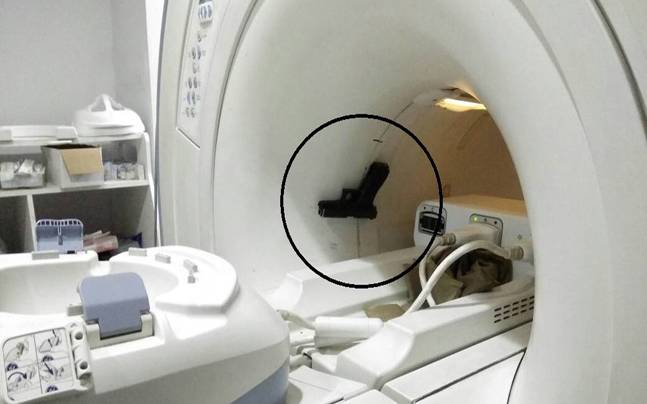A 6-year-old boy died during MRI due to an oxygen tank that was mistakenly present in the MRI room.
A 6-year-old boy underwent magnetic resonance imaging (MRI) after surgery. Although the hospital ensured that no metal objects were present within the premises, an oxygen tank mistakenly and unknowingly reached the MRI room. The child died during the MRI when the oxygen tank hit his head. During MRI, the tank flew across the room, at 20 to 30 feet per second and hit the boy’s head, fracturing the skull.
The autopsy confirmed that the death of the child was due to severe intracranial haemorrhaging and contusion secondary to the blunt force trauma to the head.
Edward A. Stolzenberg, president and chief executive of Westchester Medical Center, said:
”The trauma was due to what can only be described as a horrific accident, and the entire Medical Center is grieving over the incident. The hospital assumes full responsibility for the accident.”
Overall, MRI is one of the safest imaging modality. However, even the safest modalities can have rare accidents. Around 52% of the American MRI facilities reported accidents in a year.
MRI uses electromagnetic field to perform images of the body. The magnetic field created by the MRI is 10,000 times more powerful than the earth’s magnetic field. Therefore, if there is any metal object within the magnetic field, it can turn into projectiles.
Although rare, there have been reports of deaths or accidents due to magnetic objects during the MRI. For instance, a hairpin in the hair of a patient during MRI travelled up her nose and lodged in the pharynx. Another case report where the MRI’s magnetic field pulled a gun out of a police officer’s hand and the gun shot.

Take home message:
It is highly imperative to sweep the room beforehand for any metal objects. Thorough patient history is also indispensable as any ferromagnetic objects on/in the human body can lead to complications. For example, hospital staff and healthcare professionals should carefully remove hairpins, paper clips, bobby pins, pacemaker, metal stent, oxygen tank, etc. from the premises to avoid morbidities and mortalities.




